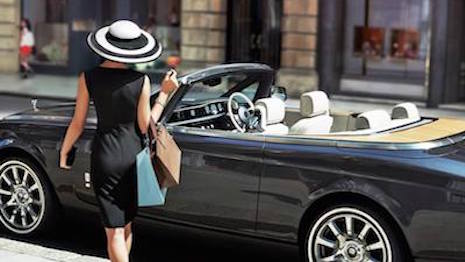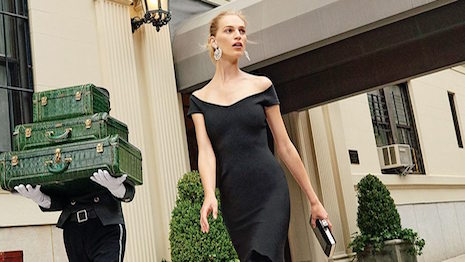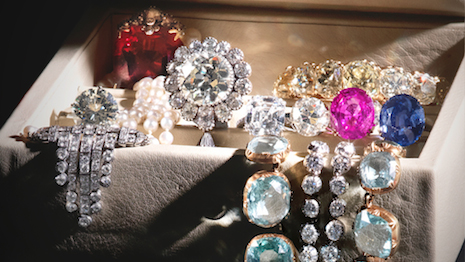 Across segments, consumers equate "cars" with luxury; image source Rolls-Royce
Across segments, consumers equate "cars" with luxury; image source Rolls-Royce
While there seems to be a general consensus on what the term “luxury” means, the definition in the minds of different segments of the population varies, according to a new report from the Shullman Research Center.
After asking consumers to define luxury in their own terms, the firm analyzed respondents’ word choices, finding trends across all adults as well as distinctions between different income brackets and those who do and do not buy luxury. When looking to promote luxury goods, having an understanding of consumers’ attitudes and vocabulary when referring to products can help marketers shape the language and strategies they use.
"The attitudes toward luxury today are mixed among the general population, as well as the affluent and luxury buyers—the five consumer segments reported on in this brief," said Bob Shullman, founder/CEO of The Shullman Research Center. "Notably there are almost as many negative themes within the top 20 themes about 'what’s luxury' for all five segments as there are positive ones.
"The differences between the affluent and general population are that on average the affluent segments are better educated, have traveled more and are much more likely to have experienced luxury products or services and therefore they are more likely to understand what luxuries actually deliver on an emotional basis among those fortunate to be able to experience luxuries."
Shullman’s “Five Descriptions of Luxury: From the Consumer’s Point of View” is based on the Shullman Luxury, Affluence and Wealth Pulse, which surveyed 1,078 individuals with household incomes of at least $75,000.
Luxury defined
Shullman Research asked hundreds of American adults this question: When you read, see or hear the word “luxury,” please describe briefly what you think about.
The firm then separated the responses by consumer profile, creating separate top 20 lists for all Americans, those with household incomes of at least $100,000, those with personal liquid assets of at least $1 million, those who have household incomes of $100,000 and liquid assets of $1 million and consumers who buy luxury products.
 Image source Neiman Marcus
Across the general population, some trends popped. Out of the top 20 terms used, only “cars” refers to a specific product, with the rest being descriptors such as “unaffordable” and “rich” and “exclusive.”
"Every year, a few million new luxury cars and SUV’s are sold in the U.S., and another few million pre-owned luxury vehicles also re-enter the marketplace," Mr. Shullman said. "In addition, billions of ad dollars (both in traditional and online media) are spent annually on car advertising, including a special emphasis on luxury cars in live sports-related ads, so it’s only natural there’s a greater awareness.
"That, plus the fact that, for so many consumers, cars are part of their daily lives, in contrast to other luxury goods and services," he said. "That’s why we track luxury cars as one of the 15 luxury categories covered in our ongoing survey, where they always rate highly."
While it may at first look like the general public's opinion can be discounted, a separate report from Shullman Research found that most luxury purchases come from those with incomes of less than $100,000 (see story).
All consumers surveyed, regardless of income, share the idea that luxury is “expensive,” “high-end,” “quality,” “name-brand” and “non-essential.”
When looking specifically at those with incomes of at least $100,000, who are the top 32 percent of U.S. households, Shullman Research found they use “extravagant,” “jewelry,” “top-of-the-line” and “unique,” terms that did not peak for the general sample.
Image source Neiman Marcus
Across the general population, some trends popped. Out of the top 20 terms used, only “cars” refers to a specific product, with the rest being descriptors such as “unaffordable” and “rich” and “exclusive.”
"Every year, a few million new luxury cars and SUV’s are sold in the U.S., and another few million pre-owned luxury vehicles also re-enter the marketplace," Mr. Shullman said. "In addition, billions of ad dollars (both in traditional and online media) are spent annually on car advertising, including a special emphasis on luxury cars in live sports-related ads, so it’s only natural there’s a greater awareness.
"That, plus the fact that, for so many consumers, cars are part of their daily lives, in contrast to other luxury goods and services," he said. "That’s why we track luxury cars as one of the 15 luxury categories covered in our ongoing survey, where they always rate highly."
While it may at first look like the general public's opinion can be discounted, a separate report from Shullman Research found that most luxury purchases come from those with incomes of less than $100,000 (see story).
All consumers surveyed, regardless of income, share the idea that luxury is “expensive,” “high-end,” “quality,” “name-brand” and “non-essential.”
When looking specifically at those with incomes of at least $100,000, who are the top 32 percent of U.S. households, Shullman Research found they use “extravagant,” “jewelry,” “top-of-the-line” and “unique,” terms that did not peak for the general sample.
 Image courtesy of Bonhams
Those who have liquid assets of at least $1 million, who are the top 8 percent of the U.S. population, are the only group studied by Shullman to use the word “nice” frequently enough for it to be in the top 20. Unlike the general population, these individuals do not use the terms “classy” or “unaffordable” when talking about luxury.
The top 5 percent of Americans, those who have both $1 million in assets and household incomes of $100,000, are the only segment to use the words “craftsmanship” and “upscale.” While “special” and “premium” were popular for all adults, these descriptors did not reach the top 20 for this group.
Among luxury buyers, “cars,” “exclusive” and “unnecessary” disappear from the top 20 for this group. They are also the only ones to use “best” and “style” to describe luxury.
Changing mindset
The luxury sector is continuing to evolve with the majority of affluent consumers recognizing that the definition of luxury is not what it was five years ago, according to a new report by Martini Media.
As consumers’ tastes have changed from exclusive or status-oriented products to an interest in rare experiences, the Internet has been a driving factor in how these individuals make decisions regarding purchases and bookings. Marketers have invested heavily in digital marketing to account for this trend and to provide consumers with content geared toward ensuring informative purchases (see story).
Changing the language used to talk about luxury will also be necessary to reach the next generation of consumers.
With retail sales flatlining, brands must appeal to a new demographic to sustain growth and forge relationships with the next generation of ultra-affluent customers, according to a senior executive from Unity Marketing at the Luxury Retail Summit: Holiday Focus 2015.
Specifically, high-earners not rich yet (HENRYs), especially HENRYs aged 44 and younger may save luxury from its current drought. Appealing to HENRYs and aspirational millennials, however, means brands will have to retell the story of luxury and market in new ways.
For young HENRYs, the “luxury” label does not carry the same mystique as it has in the past or that it might for older consumers. Instead, the word connotes over-priced and unaffordable goods even more than it defines craftsmanship or value. For these consumers, the values associated with the brand as well as the relative value in cost-per-use are more important (see story).
"Luxury marketers really need to listen to how their customers and prospects describe and talk about their luxury products and services and use the positive themes and words the customers and prospects use in their marketing efforts and not what the marketers believe they think," Mr. Shullman said.
Image courtesy of Bonhams
Those who have liquid assets of at least $1 million, who are the top 8 percent of the U.S. population, are the only group studied by Shullman to use the word “nice” frequently enough for it to be in the top 20. Unlike the general population, these individuals do not use the terms “classy” or “unaffordable” when talking about luxury.
The top 5 percent of Americans, those who have both $1 million in assets and household incomes of $100,000, are the only segment to use the words “craftsmanship” and “upscale.” While “special” and “premium” were popular for all adults, these descriptors did not reach the top 20 for this group.
Among luxury buyers, “cars,” “exclusive” and “unnecessary” disappear from the top 20 for this group. They are also the only ones to use “best” and “style” to describe luxury.
Changing mindset
The luxury sector is continuing to evolve with the majority of affluent consumers recognizing that the definition of luxury is not what it was five years ago, according to a new report by Martini Media.
As consumers’ tastes have changed from exclusive or status-oriented products to an interest in rare experiences, the Internet has been a driving factor in how these individuals make decisions regarding purchases and bookings. Marketers have invested heavily in digital marketing to account for this trend and to provide consumers with content geared toward ensuring informative purchases (see story).
Changing the language used to talk about luxury will also be necessary to reach the next generation of consumers.
With retail sales flatlining, brands must appeal to a new demographic to sustain growth and forge relationships with the next generation of ultra-affluent customers, according to a senior executive from Unity Marketing at the Luxury Retail Summit: Holiday Focus 2015.
Specifically, high-earners not rich yet (HENRYs), especially HENRYs aged 44 and younger may save luxury from its current drought. Appealing to HENRYs and aspirational millennials, however, means brands will have to retell the story of luxury and market in new ways.
For young HENRYs, the “luxury” label does not carry the same mystique as it has in the past or that it might for older consumers. Instead, the word connotes over-priced and unaffordable goods even more than it defines craftsmanship or value. For these consumers, the values associated with the brand as well as the relative value in cost-per-use are more important (see story).
"Luxury marketers really need to listen to how their customers and prospects describe and talk about their luxury products and services and use the positive themes and words the customers and prospects use in their marketing efforts and not what the marketers believe they think," Mr. Shullman said.
